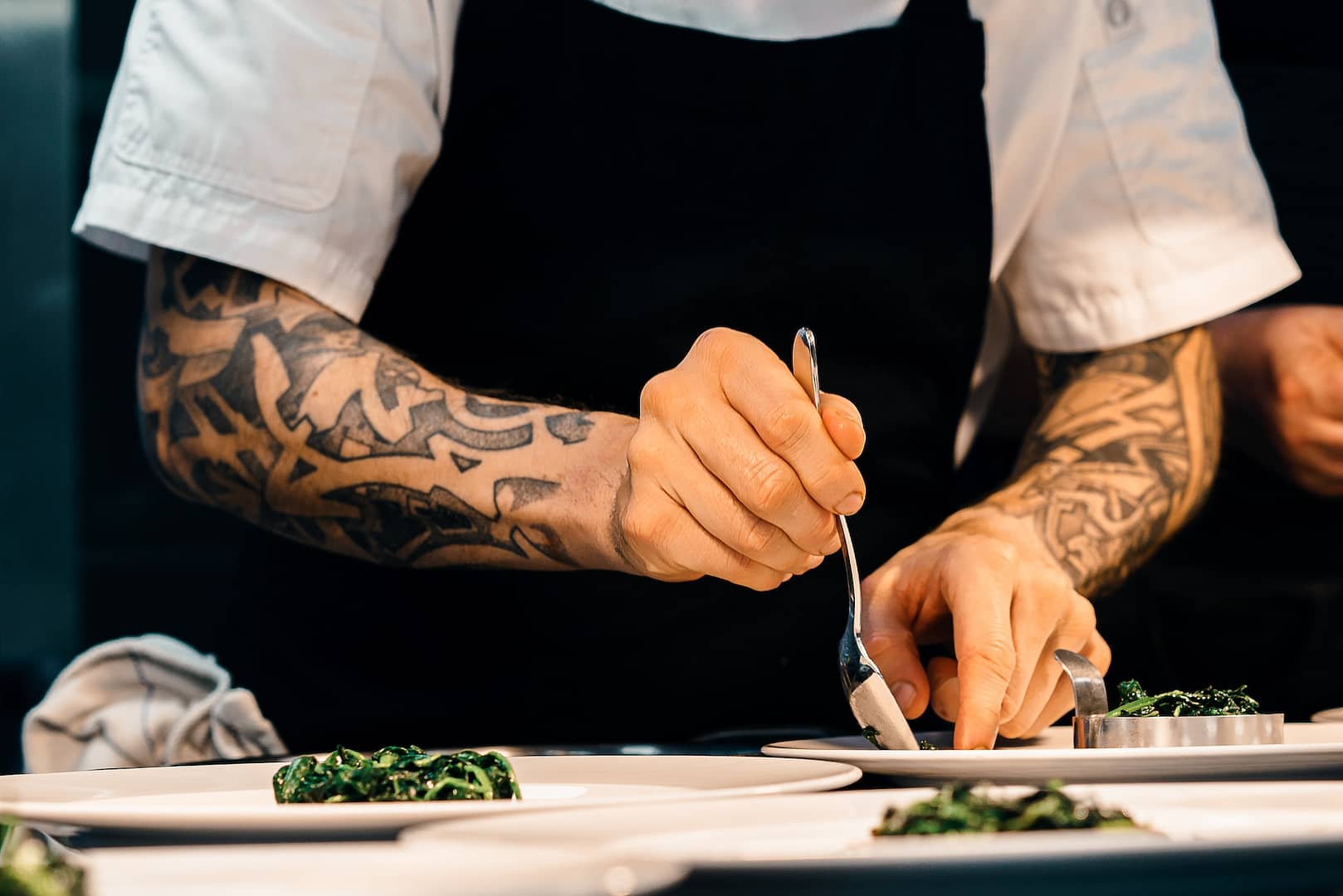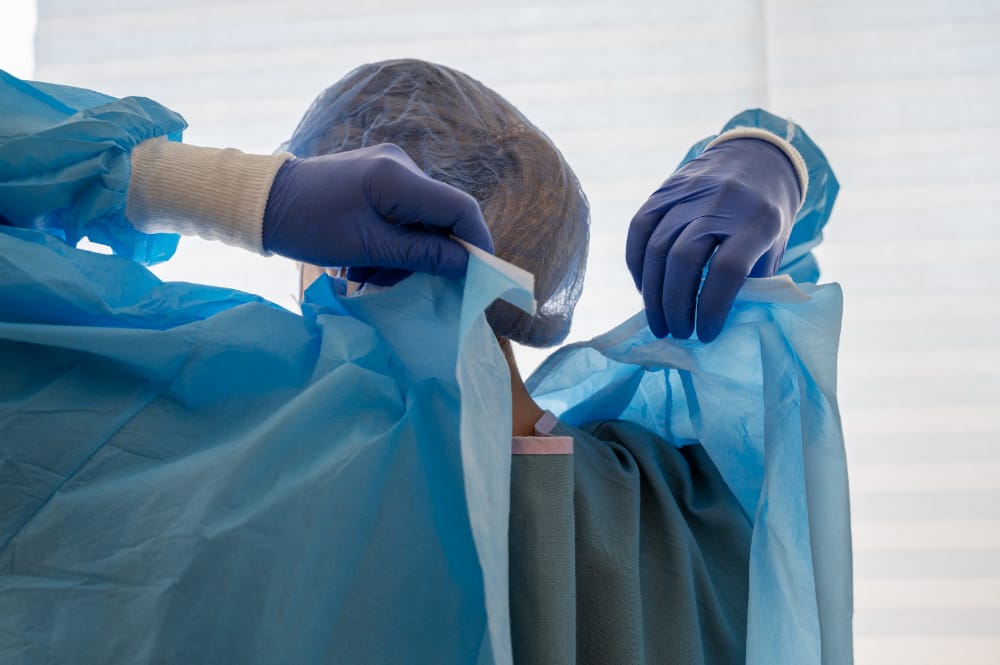Working in a kitchen can be an exhilarating and fulfilling experience. The sizzling sounds, the mouthwatering aromas, and the camaraderie among the kitchen staff create an atmosphere that is both thrilling and challenging. However, amidst the excitement, it is crucial to prioritize work safety in the kitchen. Whether you’re a professional chef, a line cook, or a passionate home cook, understanding the risks and taking necessary precautions can prevent accidents at work and promote a healthy working environment.
The Risks in the Kitchen
The kitchen is a dynamic environment where various risks lurk, demanding constant vigilance. Let’s explore five common risks that underscore the importance of work safety in the kitchen.
Burns and Scalds
Hot surfaces, open flames, boiling liquids – the kitchen is a hotbed of potential burn hazards. Whether it’s accidentally touching a hot stove, spilling boiling water, or coming into contact with scorching cookware, burns and scalds are a prevalent danger. These injuries can range from minor blisters to severe burns requiring medical attention. Proper training, awareness, and the use of protective gear like oven mitts and aprons can significantly reduce the risk of burns.
Cuts and Lacerations
Sharp knives, slicers, and other cutting tools are essential in any kitchen. However, they can quickly turn into dangerous weapons if not handled with care. In the fast-paced environment of a kitchen, distractions and haste can lead to accidental cuts and lacerations.
A slip of the knife or careless handling of sharp objects can cause deep wounds, leading to blood loss and the risk of infection. Wearing cut-resistant gloves, using knives with safety features, and maintaining focus can prevent these accidents from occurring.
Slips, Trips, and Falls
The kitchen is often a bustling space, with spills, wet floors, and cluttered areas contributing to slip, trip, and fall hazards. Liquids and food debris on the floor can turn a simple walk into a disastrous slip, potentially resulting in broken bones, sprains, or head injuries. To mitigate these risks, it is crucial to keep the kitchen clean and dry, promptly clean up spills, and ensure that walkways are clear of obstacles. Slip-resistant footwear can provide an additional layer of protection.
Fire Hazards
The combination of heat, flammable materials, and open flames creates an environment conducive to fires. A momentary lapse in attention or mishandling of equipment can lead to devastating fires that can cause severe damage, injuries, and even loss of life. Understanding fire safety protocols, having fire extinguishers readily available, and regular equipment maintenance are vital to preventing kitchen fires.
Inhalation of Harmful Substances
The kitchen is filled with fumes, steam, and various substances that can be harmful if inhaled. Chemical cleaning agents, smoke from burning food, and steam from boiling liquids can all pose respiratory risks to kitchen staff. Continuous exposure to these substances can lead to respiratory problems and long-term health issues. Proper ventilation, the use of protective masks, and regular maintenance of exhaust systems can help minimize these risks.
Common Kitchen Accidents
In addition to the aforementioned risks, several common accidents occur frequently in kitchens. Understanding these accidents can further highlight the importance of prioritizing work safety:
Accidental Knife Injuries
Knife injuries are prevalent in kitchens, often resulting from improper handling or lack of attention. Slicing through fingers or accidentally cutting oneself while preparing ingredients are unfortunate yet avoidable accidents.
Falls from Ladders or Step Stools
Reaching high shelves or accessing overhead storage often requires the use of ladders or step stools. Unfortunately, accidents can happen when climbing or descending from these elevated positions. Losing balance, incorrect placement of the ladder or stool, or even using them in a hurry can lead to falls and potential injuries.
Burns from Hot Surfaces or Appliances
Working with hot surfaces and appliances poses a risk of burns. Whether it’s accidentally touching a hot stove, a hot pan handle, or coming into contact with a heated oven, burns can occur if caution is not exercised.
Electrical Shocks
Kitchens are filled with electrical appliances and equipment. Improper handling, damaged cords, or water contact can result in electrical shocks, which can be not only painful but also potentially life-threatening.
Food Contamination
Maintaining proper hygiene and food handling practices is crucial to prevent foodborne illnesses. Cross-contamination, improper storage, or failure to follow food safety guidelines can result in contamination, leading to illnesses among both kitchen staff and customers.
Slips and Falls
Slips and falls are common accidents in kitchens due to wet floors, spills, or cluttered areas. Staff rushing to meet deadlines or neglecting to clean up spills promptly can increase the likelihood of slip and fall incidents.
Making an Injury at Work Claim
In the unfortunate event of a workplace injury in the kitchen, it is important to be aware of your rights and options. Making an injury at work claim can help you receive compensation for medical expenses, lost wages, and any other damages incurred. Here are some steps to consider if you find yourself in such a situation:
- Report the Incident: Inform your supervisor or manager immediately about the accident and your injuries. It is crucial to have an official record of the incident.
- Seek Medical Attention: Visit a healthcare professional to assess and treat your injuries. Make sure to keep all medical records and documentation related to your treatment.
- Document the Incident: Take photographs of the scene, any equipment involved, and your injuries, if possible. Collect witness statements, as their testimonies can support your claim.
- Contact National Claims: Consult with us at National Claims, an experienced workplace accident claims specialists. We can guide you through the claims process and help protect your rights.

Conclusion
Work safety in the kitchen is not just a matter of compliance; it is a vital aspect of creating a healthy and productive environment. By acknowledging and addressing the risks, implementing safety measures, and fostering a culture of awareness, we can minimize accidents and injuries in the kitchen.
From burns and cuts to slips and falls, the kitchen presents various hazards that can be mitigated through proper training, equipment maintenance, and the use of personal protective gear. Additionally, being mindful of food safety practices and hygiene standards helps prevent foodborne illnesses and maintains the reputation of the establishment.
In the unfortunate event of a workplace injury, knowing your rights and seeking legal assistance can help you navigate the process of making an injury at work claim and receiving the compensation you deserve.
By prioritizing work safety in the kitchen, we not only protect the well-being of kitchen staff but also create an environment that fosters productivity, financial stability, and customer trust. Let’s remember that a safe kitchen is a successful kitchen.
Contact us today to start your claim for any accident at work and find out more about your rights as an employee.
Click below to see why we are one of the most trusted claims management companies in the UK.





